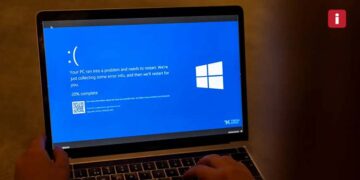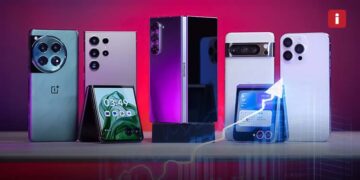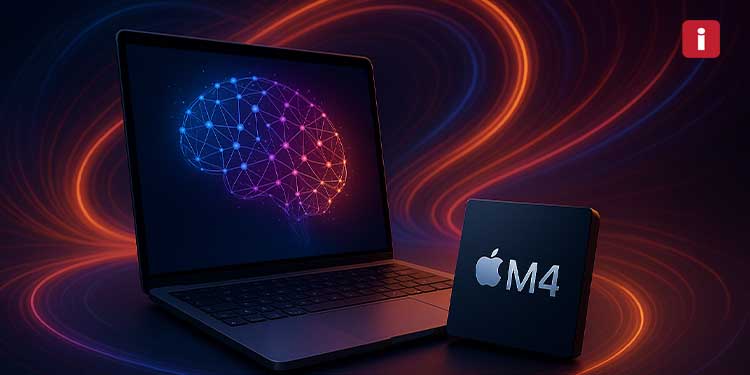A Chip for the AI Era
When Apple unveiled the M1 chip back in 2020, it redefined expectations for what silicon in a laptop could deliver. Now, just a few years later, the Apple M4 chipset is here—and it’s not just another performance bump. It’s a clear signpost pointing toward the future of AI-powered laptops.
With AI becoming central to everything from photo editing and language translation to code generation and creative tools, Apple is staking its ground firmly in this domain. The M4 is purpose-built to meet the demands of a new computing paradigm—where machine learning and on-device intelligence aren’t just features, but necessities.
The M4 Chipset: Architecture and Specs
Built on TSMC’s second-generation 3-nanometer (N3E) process, the Apple M4 chipset is a leap forward in both performance and efficiency. It’s designed around the next iteration of Apple’s custom architecture and features:
- Up to 10-core CPU (4 performance, 6 efficiency cores)
- Up to 10-core GPU with hardware-accelerated ray tracing and mesh shading
- A 16-core Neural Engine, capable of 38 trillion operations per second (TOPS)
- Unified memory architecture (UMA), supporting up to 120 GB of RAM (on higher-end models)
But the headline-grabber here is the Neural Engine, which Apple claims is faster than any AI accelerator in any consumer laptop today. In real-world tasks, this translates into major speed-ups for AI-heavy applications, think real-time image generation, advanced video editing, or local large language model (LLM) inference.
Why the M4 Matters for AI-Powered Workflows
The future of AI-powered laptops hinges on one key factor: the ability to run sophisticated AI models locally, securely, and efficiently. Cloud-based AI remains powerful but comes with latency, bandwidth, and privacy trade-offs. Apple’s approach with the M4 is to bring as much of that intelligence on-device as possible.
Real-World Use Cases
- Creative Professionals: With apps like Final Cut Pro and Logic Pro increasingly integrating AI features (auto-ducking, smart framing, voice isolation), the M4 enables low-latency, high-throughput AI without round-tripping to the cloud.
- Developers and Data Scientists: Tools like Xcode, Create ML, and Core ML allow native deployment of custom models directly on the M4. Expect workflows where AI models are trained in the cloud and deployed locally for real-time inference.
- Students and General Users: Live transcription, intelligent photo search, AI summarization in Safari, and enhanced accessibility features now run more smoothly and securely on-device.
Apple is clearly betting that future computing will be AI-first—and that consumers will expect the same performance from their laptops as they do from cloud services.
Competing in a New Era of AI Silicon
The M4’s debut comes amid a flurry of moves from rivals. Qualcomm’s Snapdragon X Elite promises robust AI capabilities on Windows, while Intel’s Lunar Lake architecture, expected later this year, integrates an NPU to challenge Apple’s dominance. Meanwhile, NVIDIA continues to dominate the high-performance AI training market, but has no meaningful consumer laptop presence outside gaming and workstation GPUs.
Yet Apple’s advantage lies in vertical integration. It controls the hardware, software, and OS, enabling seamless optimization. For instance, Apple’s Core ML framework lets developers tap into the Neural Engine without complex configurations accelerating inference for models like Stable Diffusion or Whisper.
Benchmarks and Performance
Initial benchmarks show the M4 outperforming the M3 by 25–30% in CPU tasks and 35–50% in AI inference, depending on the model and software stack. Notably, tests involving Transformer-based LLMs (such as LLaMA and GPT derivatives) show 2x faster inference times compared to the M3 without needing an external GPU.
Expert Insights: A Future-Proof Foundation
Ben Bajarin, CEO of Creative Strategies, summed it up well: “Apple is making it clear that the AI race isn’t just about the cloud. It’s about bringing the power of generative models into your daily workflow right on your laptop.”
In a similar vein, Apple’s own Johny Srouji, SVP of Hardware Technologies, noted during the M4 announcement: “With the M4, we’ve built the most powerful Neural Engine ever in a personal computer, delivering AI performance that rivals high-end cloud instances but without the cloud.”
These perspectives reinforce that Apple’s roadmap is aggressively focused on personal AI, with privacy and performance as pillars.
Implications and Road Ahead
The Apple M4 chipset isn’t just a new processor—it’s a declaration of what the future of AI-powered laptops should look like. Expect more software innovations that lean heavily into generative AI, from creative apps to productivity tools.
There are also hints that Apple may leverage the M4’s capabilities in upcoming mixed-reality devices, such as the next Vision Pro iteration. Imagine real-time object recognition, spatial audio generation, or live environment mapping—powered by the same chip in your MacBook.
For developers, the M4 opens up a world of possibilities via:
- Core ML for model deployment
- Metal for GPU compute tasks
- Swift for TensorFlow and third-party frameworks for edge AI
Conclusion: A Chip That Sets the AI Standard
In the battle for the future of personal computing, Apple’s M4 has positioned itself not just as a faster chip, but as a smarter one. It redefines what users should expect from a laptop in an AI-centric world where speed, privacy, and intelligence all live on-device.
As other players scramble to match Apple’s AI silicon prowess, the M4 sets a new benchmark: one where AI isn’t just a feature, it’s the foundation.













































